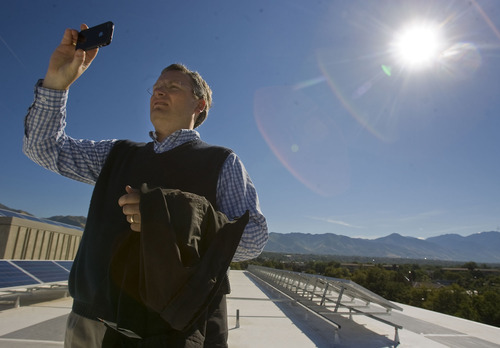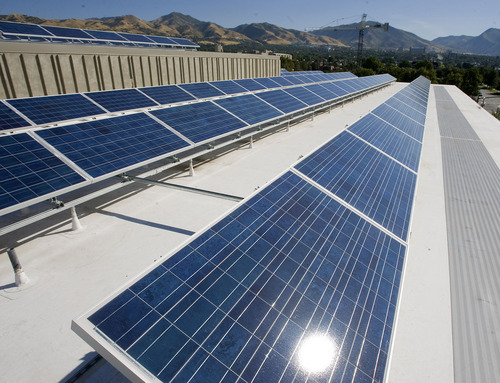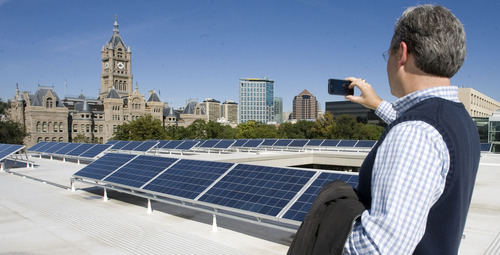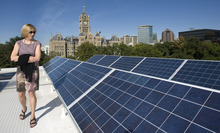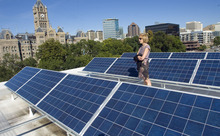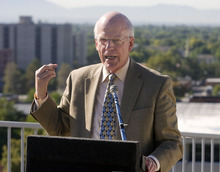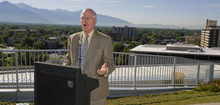This is an archived article that was published on sltrib.com in 2011, and information in the article may be outdated. It is provided only for personal research purposes and may not be reprinted.
The new 30-kilowatt solar energy system unveiled Monday on the roof of The Leonardo museum in downtown Salt Lake City is more than just a series of panels that will capture the sun's rays to produce electricity for the technology and art center once it opens in early October.
It also represents another big leap forward for Salt Lake City's ongoing effort to promote the development of at least 10 megawatts of renewable energy by 2015, said Vicki Bennett, director of the city's Department of Sustainability and Environment.
"We are about half way toward reaching that goal," Bennett said. A megawatt is enough electricity to power the appliances in 750 homes.
Bennett noted when Salt Lake City opens its Public Safety Building just east of Library Square in 2013, its rooftop array panels will be supplemented by others in a remote location on the west side of the city, which will help that structure achieve the milestone of being the first "net zero" public-safety building in the country.
The term "net zero" refers to buildings that have a minimal impact on the environment and generate as much energy as they use.
Although The Leonardo won't be a net zero building, the solar panel array on its roof is expected to significantly reduce the amount of electricity the city will have to purchase to operate it.
"We're not sure how much of a savings we'll achieve because we have a new heating and air-conditioning system that we haven't operated yet," said Peter Giles, The Leonardo's executive director. "But we are anticipating the savings will be significant."
Giles said the solar energy system will complement the museum's education efforts and pointed out that visitors will be able to view a monitor displaying how much electricity the solar panels are producing at any given time.
The 148 panels and equipment that make up the solar power system were made possible by a $125,000 award from Rocky Mountain Power's popular Blue Sky renewable-energy program, and $60,000 from a bond approved by Salt Lake City voters in 2003.
Under the Blue Sky program, the utility's customers who sign up voluntarily pay a premium on their monthly electricity bills — $1.95 for each 100 kilowatt hour block of Blue Sky Energy they buy — so they can be assured they are supporting the production of electricity from renewable resources.
Jeff Hymas, a spokesman for Rocky Mountain Power, said that when a customer commits to buying one or more blocks of renewable energy, the utility promises that a similar quantity of electricity generated from wind farms or other renewable resources will be put onto the regional power grid.
Rocky Mountain Power says 30,800 Utahns are participating in its Blue Sky program. The utility also annually accepts applications to fund small, community-based solar, wind and low-impact hydropower projects — undertakings it hopes will help educate the public on the benefits of renewable energy.
Hymus noted that since 2006, the Blue Sky program has provided funding for 50 small renewable-energy projects. Of that, 20 were in Salt Lake City.
"We're expecting to announce the awards for 2011 within the next month or so," he said.
Twitter: @OberbeckBiz


